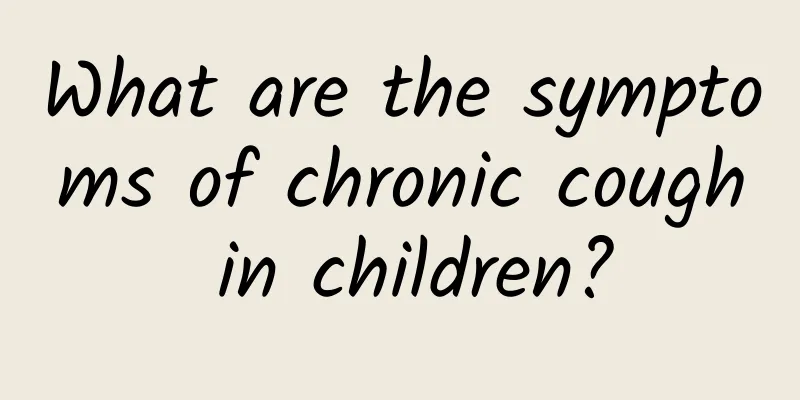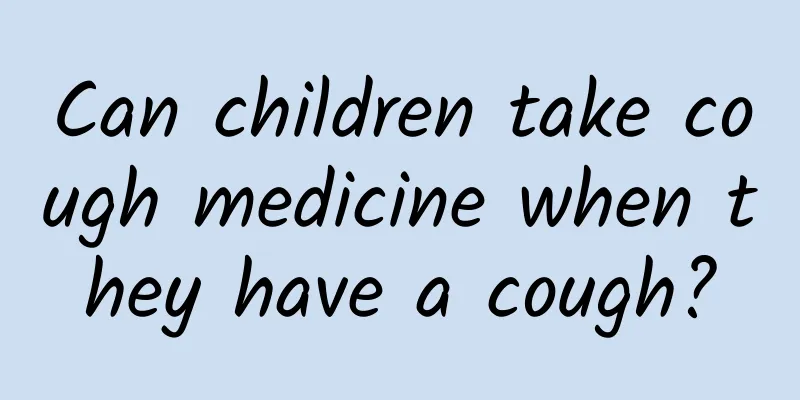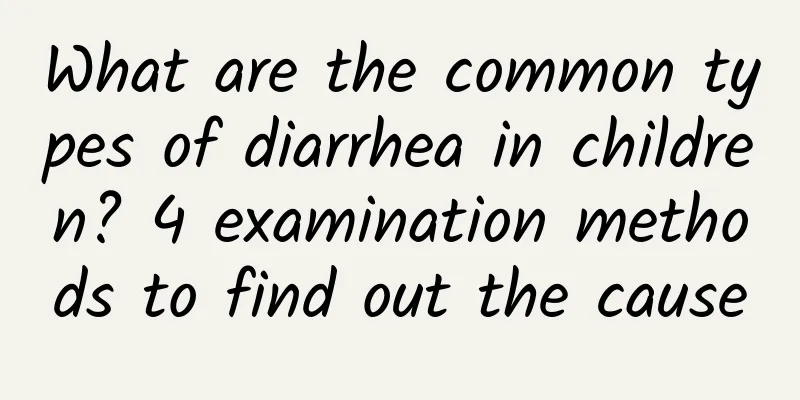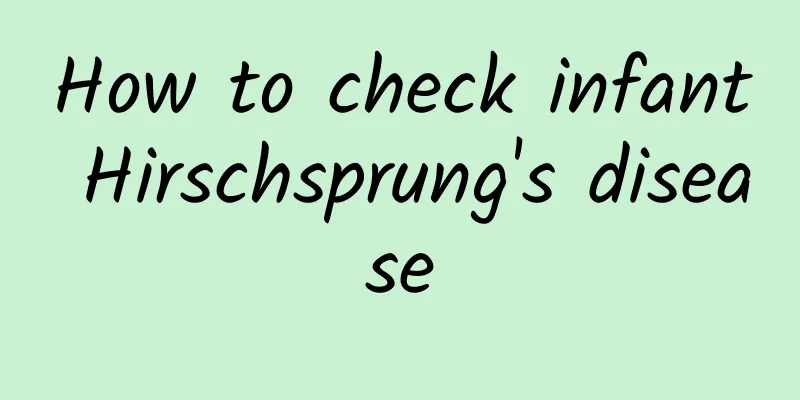What are the dietary taboos for children with diarrhea? What should I do if my child has diarrhea?
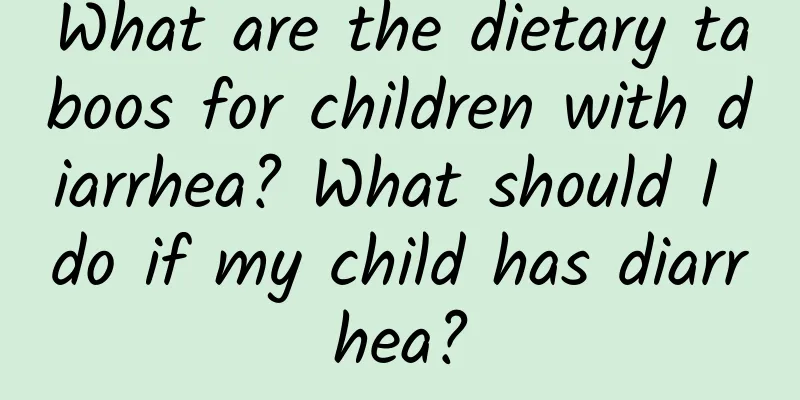
|
Diarrhea is a very common problem. For children, their body resistance is relatively poor. Sometimes eating some unhygienic food may cause diarrhea. Diarrhea needs to be treated in time. There are some dietary taboos for diarrhea, and some foods are not suitable for eating. So what are the dietary taboos for children with diarrhea? What should I do if children have diarrhea? The following is an introduction. 1. Dietary taboos for children with diarrhea 1. Avoid eating high-fiber foods Most plant fibers can promote intestinal peristalsis, so when children have diarrhea, they should avoid eating foods with more fiber, such as leafy vegetables, bamboo shoots, melons, whole grains, etc. If it is mild diarrhea, you can choose foods with more tender leafy vegetables and less fiber, and the amount should not be too much. 2. Provide staple foods To provide children with calories, it is advisable to supplement them with whole grain foods such as rice, such as infant nutritious rice cereal, porridge, white toast, etc., but it still depends on the age of the child and the condition of diarrhea. Generally speaking, infant nutritious rice cereal is easy to digest and can prevent and treat diarrhea in children. For children who can already chew, porridge and bone soup can be fed to replenish calories and provide lost electrolytes. Older children can eat peeled white toast as a snack. 3. Pay attention to protein intake It is recommended to choose lean meat, skinless chicken, fish, eggs, tofu and other foods that are less greasy and contain protein. Although the fat content of seafood is very low, if you want to eat it, you must ensure that it is fresh and hygienic to avoid improper storage, which may cause harmful bacteria to invade the body after eating and cause diarrhea in children again. 4. Adjust the concentration of infant formula For mild diarrhea in children, you can dilute the milk. If the child drinks formula milk, you should let the child drink a fixed brand and do not change it at will to avoid the child's discomfort. If you want to choose another brand of milk powder for the child, pay attention to whether the child has an uncomfortable gastrointestinal reaction during the change of milk powder. If there is discomfort, temporarily stop changing the milk powder. 5. Pay attention to the cooking method when treating children with diarrhea The cooking method should be steaming or boiling, and avoid frying, pan-frying and other methods that are difficult to digest. 2. What to do if children have diarrhea 1. If the child's diarrhea is mild and there are no other symptoms, then he basically has caught a cold or has some indigestion. At this time, you need to add some clothes to the child, especially cover his abdomen with something to prevent him from catching a cold, and then drink some salt water. 2. You can peel the apples, cut them into pieces, put them into a pot, add a little water and boil them. After about five minutes, pour out the apple soup, let it cool and give it to your child to drink; or you can directly squeeze the apple juice, then heat it slightly and give it to your child to drink. 3. When feeding your child, you can consider feeding him with rice soup temporarily, or you can make carrot soup and drink it with the rice soup. 4. Change your child's diaper or wet diaper at any time, wash the child's lower body thoroughly with warm water, keep it clean, and even apply some antibacterial ointment. 5. If the child has severe diarrhea, occurs frequently, and is accompanied by other abnormal conditions such as vomiting and fever, then the child must be taken to the hospital for examination and given some nutrient solution. 3. The main cause of baby diarrhea 1. Physical factors (1) The gastrointestinal tract of infants is not fully developed and the enzyme activity is low, but their nutritional needs are relatively high, which puts a heavy burden on the gastrointestinal tract. (2) During infancy, the nervous, endocrine, circulatory systems, liver, and kidney functions are all immature and their regulatory functions are poor. (3) Infants’ immune function is also imperfect. The serum E. coli antibody titer is lowest from birth to 2 years old, and then gradually increases. (4) The distribution of body fluids in infants is different from that in adults. Extracellular fluid accounts for a higher proportion, and the water metabolism is vigorous and the regulatory function is poor, making it easier for infants to develop fluid and electrolyte disorders. 2. Infection factors It is divided into intra-digestive tract infection and extra-digestive tract infection, with the former being the main type. (1) Infection in the digestive tract: Pathogenic microorganisms can enter the digestive tract of children through contaminated food or water, which often occurs during artificial feeding. (2) Extra-digestive tract infection: Infection of organs and tissues outside the digestive tract can also cause diarrhea, which is common in otitis media, pharyngitis, pneumonia, urinary tract infection and skin infection. (3) Intestinal flora disorders caused by the abuse of antibiotics: long-term and large-scale use of broad-spectrum antibiotics, such as chloramphenicol, kanamycin, gentamicin, ampicillin, and various cephalosporins, especially the combined use of two or more. 3. Digestive dysfunction (1) Dietary factors. (2) Intolerance to carbohydrates. (3) Food allergy. (4) Effects of drugs. (5) Other factors: unclean environment, too little outdoor activities, sudden changes in daily life patterns, and sudden changes in external climate (known as "wind, cold, heat, and dampness diarrhea" in traditional Chinese medicine) can also easily cause diarrhea in infants. |
<<: How to check for allergic rhinitis when your baby coughs
Recommend
How much does it cost to treat acute laryngitis in children?
Experts explain that the cost of treating acute l...
Prevention and treatment of neonatal jaundice
Neonatal jaundice refers to a condition in which ...
What causes high hemoglobin?
High hemoglobin levels usually mean that the body...
How to treat a two and a half year old baby with cough and phlegm How to treat a two and a half year old baby with cough and phlegm
When a two-year-old baby coughs and has phlegm, t...
How to relieve nocturnal attacks of acute laryngitis in children
When acute laryngitis occurs at night in children...
Hand, foot and mouth disease is most afraid of three kinds of fruits
There are three fruits that hand, foot and mouth ...
How to care for children's eczema in daily life? There are 3 ways to care for it
Pediatric eczema creams include hormonal and non-...
Why does children’s cough never get better?
Children's persistent cough may be related to...
ADHD medication treatment
Drug therapy is one of the effective means of tre...
What medicine is better for babies with severe bronchitis cough? How to treat babies with severe bronchitis cough?
The cough symptoms caused by bronchitis are quite...
Is hot or cold compress the way to reduce swelling in mumps?
The method to reduce swelling of mumps is hot com...
How to treat a child who keeps coughing?
Children have relatively poor disease resistance....
What to do if your baby has a cold? 7 principles for treating your baby's cold
Colds are mostly caused by viruses, which spread ...
What should we pay attention to when children have cough
Children are one of the common patients with coug...
Fruits that are the nemesis of hand, foot and mouth disease
Hand, foot and mouth disease is an infectious dis...
